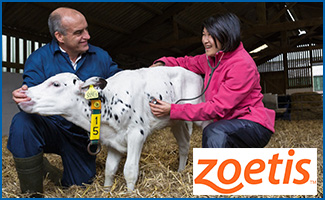
Zoetis conducts routine surveillance of clinically relevant strains of infectious agents to follow emerging diseases in livestock and companion animals. They also monitor susceptibility trends to commonly used antimicrobial agents in key target pathogens in swine, dairy cattle, beef cattle, dogs, and horses.
Since two-thirds of new infectious agents infecting humans are zoonotic in nature, these biosurveillance approaches in domesticated animals serve not only the welfare of the livestock and companion animal for which we care, but also the human population as well. The information is used to rationally direct appropriate use of currently approved vaccine, medicines, and management practices. In addition, the data are used to direct future research efforts in the areas of new diagnostic tests, updated or new vaccines, and new therapeutics.
Biosurveillance for emergence of new strains of infectious agents (bacteria or viruses) is designed differently from that which monitors for trends in antimicrobial susceptibility over time. The former must discern not only that a new strain is detected, but also that it is disseminating in a region or area, and that it is clinically relevant (that is, creating a new disease syndrome against which existing treatments or preventatives are failing). With the ad vent of metagenomics, this has become significantly easier. Susceptibility patterns and trends over time require careful sampling strategies that prevent duplication or repeat sampling in the same herd or flock, provide regional representation, and have the statistical power to detect trends or patterns of relevance. Both require sophisticated and reproducible analytical techniques that can be pooled and/or compared across geographies.
vent of metagenomics, this has become significantly easier. Susceptibility patterns and trends over time require careful sampling strategies that prevent duplication or repeat sampling in the same herd or flock, provide regional representation, and have the statistical power to detect trends or patterns of relevance. Both require sophisticated and reproducible analytical techniques that can be pooled and/or compared across geographies.
Zoetis works with diagnostic laboratories at the state or provincial level to access samples, provide the appropriate and consistent testing, and enable broad geographical coverage that would not otherwise be economically feasible. This partnership exemplifies the types required for the success and viability of any One Health system. Extension of this partnership to include the human health “side of the coin” is a critical next step to move One Health approaches to even greater impact to global health, both for animals and humans.